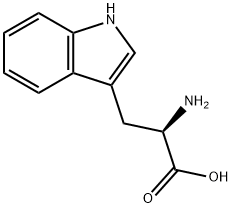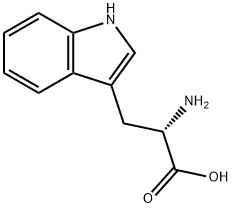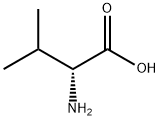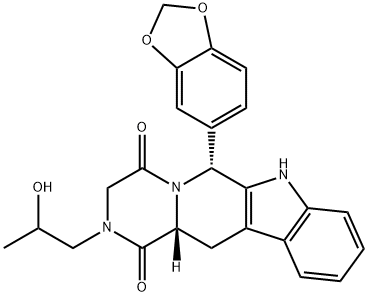D-Tryptophan
Synonym(s):(R)-2-Amino-3-(3-indolyl)propionic acid;D -α-Amino-3-indolepropionic acid
- CAS NO.:153-94-6
- Empirical Formula: C11H12N2O2
- Molecular Weight: 204.23
- MDL number: MFCD00005647
- EINECS: 205-819-9
- SAFETY DATA SHEET (SDS)
- Update Date: 2025-09-16 17:17:29

What is D-Tryptophan?
Chemical properties
white powder
The Uses of D-Tryptophan
An essential amino acid found in naturally produced pedtides. Unlike its stereoisomer, L-tryptophan, it is not used in structural or enzyme proteins.
The Uses of D-Tryptophan
D-Tryptophan is used for human embryonic kidney cell (HEK-293, ATCC: CRL-1573) culture. The product is a sweetener used to study the release of incretins from enteroendocrine cells triggered by sugar but not by sweeteners.
What are the applications of Application
D-Tryptophan is an unnatural isomer of tryptophan
Definition
ChEBI: The D-enantiomer of tryptophan.
General Description
White solid.
Air & Water Reactions
Slightly soluble in water.
Reactivity Profile
Amines are chemical bases. They neutralize acids to form salts plus water. These acid-base reactions are exothermic. The amount of heat that is evolved per mole of amine in a neutralization is largely independent of the strength of the amine as a base. Amines may be incompatible with isocyanates, halogenated organics, peroxides, phenols (acidic), epoxides, anhydrides, and acid halides. Flammable gaseous hydrogen is generated by amines in combination with strong reducing agents, such as hydrides.
Fire Hazard
Flash point data are not available for D(+)-Tryptophan, but D(+)-Tryptophan is probably combustible.
Biochem/physiol Actions
Low level of D-tryptophan is capable of preventing the growth of an?L-tryptophan-requiring mutant of the?E. coli.
Properties of D-Tryptophan
| Melting point: | 282-285 °C (dec.)(lit.) |
| Boiling point: | 342.72°C (rough estimate) |
| alpha | 31.5 º (c=1, H2O 24 ºC) |
| Density | 1.1754 (rough estimate) |
| refractive index | 31 ° (C=1, H2O) |
| storage temp. | Keep in dark place,Inert atmosphere,Room temperature |
| solubility | Aqueous Base (Slightly), DMSO (Slightly, Heated, Sonicated), Methanol (Slightly) |
| form | Powder |
| pka | 2.30±0.10(Predicted) |
| color | White to slightly yellow |
| Water Solubility | 11 g/L (20 ºC) |
| BRN | 86198 |
| Stability: | Stable. Incompatible with oxidizing agents. |
| CAS DataBase Reference | 153-94-6(CAS DataBase Reference) |
| EPA Substance Registry System | D-Tryptophan (153-94-6) |
Safety information for D-Tryptophan
| Signal word | Warning |
| Pictogram(s) |
 Exclamation Mark Irritant GHS07 |
| GHS Hazard Statements |
H315:Skin corrosion/irritation H319:Serious eye damage/eye irritation H335:Specific target organ toxicity, single exposure;Respiratory tract irritation |
| Precautionary Statement Codes |
P302+P352:IF ON SKIN: wash with plenty of soap and water. P305+P351+P338:IF IN EYES: Rinse cautiously with water for several minutes. Remove contact lenses, if present and easy to do. Continuerinsing. |
Computed Descriptors for D-Tryptophan
| InChIKey | QIVBCDIJIAJPQS-SECBINFHSA-N |
D-Tryptophan manufacturer
JSK Chemicals
New Products
4,4-Difluoropiperidine hydrochloride tert-butyl 9-methoxy-3-azaspiro[5.5]undecane-3-carboxylate Indole Methyl Resin N-Isopropylurea N,N-Dicyclohexylcarbodiimide(DCC) MELDRUMS ACID 5-METHYLISOXAZOLE-4-CARBOXYLIC ACID Magnessium Bis glycinate Zinc ascorbate 1-bromo-2-butyne 2-acetamidophenol 9(10H)-anthracenone Erythrosin B, 4-Piperidinopiperidine 2-((4-morpholinophenylamino) (methylthio) methylene) malononitrile 2,4-dihydroxybenzaldehyde 3-(4-morpholinophenylamino)-5-amino-1H-pyrazole-4-carbonitrile Methyl 2-methylquinoline-6-carboxylate 2,6-dichloro-4-nitropyridine 4-Bromo-2-chlorobenzonitrile 2-(benzylamino)acetic acid hydrochloride 4-(tert-Butoxycarbonylamino)but- 2-ynoic acid 3,4-dihydro-2H-benzo[b][1,4]dioxepine 1-Phenyl-1-cycloprppanecarboxylicacidRelated products of tetrahydrofuran




![(1S,3S)-1-(1,3-Benzodioxol-5-yl)-2-(2-chloroacetyl)-2,3,4,9-tetrahydro-1H-pyrido[3,4-b]indole-3-carboxylic Acid Methyl Ester](https://img.chemicalbook.in/CAS/GIF/629652-42-2.gif)



You may like
-
 153-94-6 D-Tryptophan, 98% 99%View Details
153-94-6 D-Tryptophan, 98% 99%View Details
153-94-6 -
 D-Tryptophan CAS 153-94-6View Details
D-Tryptophan CAS 153-94-6View Details
153-94-6 -
 D-Tryptophan CAS 153-94-6View Details
D-Tryptophan CAS 153-94-6View Details
153-94-6 -
 D-Tryptophan (base) CAS 153-94-6View Details
D-Tryptophan (base) CAS 153-94-6View Details
153-94-6 -
 D-Tryptophan CAS 153-94-6View Details
D-Tryptophan CAS 153-94-6View Details
153-94-6 -
 D-Tryptophan 99% CAS 153-94-6View Details
D-Tryptophan 99% CAS 153-94-6View Details
153-94-6 -
 D-Tryptophan >99% (HPLC) CAS 153-94-6View Details
D-Tryptophan >99% (HPLC) CAS 153-94-6View Details
153-94-6 -
 D-Tryptophan CAS 153-94-6View Details
D-Tryptophan CAS 153-94-6View Details
153-94-6
